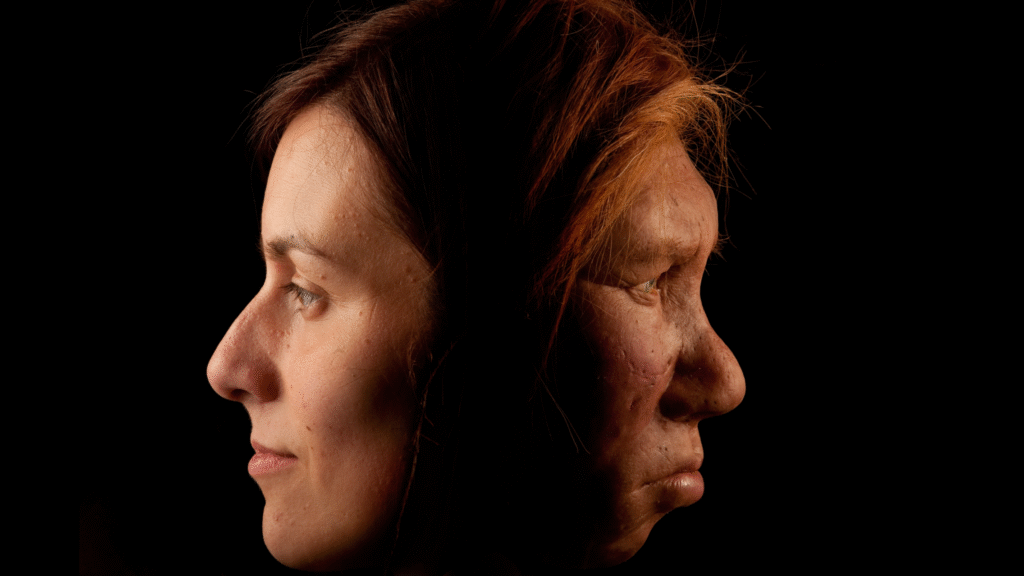A deadly genetic incompatibility between Neanderthals and modern humans may have hastened the extinction of their ancient cousins, a new study suggests.
Researchers have found that a different version of a gene related to red blood cell function may have caused fetuses in Neanderthal-human hybrid women to miscarry.
When Neanderthals and early modern humans met in Eurasia about 45,000 years ago, “they exchanged genes and may have also transmitted hidden reproductive risks that shaped the fate of both lineages,” Patrick Eppenberger, co-director of the Evolutionary Pathophysiology and Mummy Research Group at the Zurich Institute for Evolutionary Medicine, and colleagues wrote in a study published in a preprint. Database bioRxiv September 29th (Not yet peer-reviewed.)
you may like
The researchers focused on the PIEZO1 gene, which affects red blood cells and is found in both modern humans (Homo sapiens) and Neanderthals. They discovered that the PIEZO1 gene differs between Neanderthals and modern humans.
The Neanderthal variant is similar to those found in other great apes, allowing hemoglobin in red blood cells to cling more tightly to oxygen molecules, while the new Homo sapiens variant allows oxygen to pass through surrounding tissues more efficiently. Neanderthals may have maintained the original mutant because it had an advantage in surviving extreme cold and periods of famine, the researchers suggested.
However, if the mother’s blood has an abnormally high amount of oxygen bound to hemoglobin, it means that low levels of oxygen are passed to the fetus through the placenta. This can lead to hypoxia (lack of oxygen), restriction of fetal growth, or miscarriage.
However, because of the way the PIEZO1 gene mutation is inherited, this incompatibility only occurs when the mother of a Neanderthal-human hybrid interbreeds with the father of a modern human, or when the mother of a Neanderthal-human hybrid interbreeds with the father of a Neanderthal-human hybrid.
“Many of their descendants will not survive,” the researchers wrote. This means that Neanderthal women had less mitochondrial DNA, which was carried in eggs and passed from mother to child, the authors wrote in the study. Over several generations of interbreeding between Neanderthals and humans, this may have severely impaired the hybrid Neanderthal’s ability to produce children, the researchers said.
“The incompatibility of PIEZO1 may have gradually eroded Neanderthal fertility and accelerated Neanderthal extinction each time the two groups interacted,” the researchers wrote.
April Nowell, a Paleolithic archaeologist at the University of Victoria who was not involved in the study, told Live Science in an email that the study adds a much-needed piece to the puzzle of Neanderthal extinction: mother-infant incompatibility in oxygen transfer during pregnancy.
you may like
“Alleles are very interesting.” [gene variant] “What may have saved Neanderthals in the past was their ultimate downfall when they started interbreeding with modern humans,” Nowell said.
John Hawkes, a biological anthropologist at the University of Wisconsin who was not involved in the study, told Live Science in an email that the PIEZO1 maternal-fetal incompatibility is interesting and similar to other genetic blood disorders, such as Rh factor incompatibility in modern humans.
“This is one of many cases in which a genetic mutation originating from an ancient population may have had an adverse effect, reducing its frequency in modern humans over time,” Hawkes said.
However, PIEZO1 is not the final answer to the problem of Neanderthal extinction.
“No single gene can explain the long and complex interactions across many ancient human populations as modern humans invaded and interacted with the places they lived,” Hawkes said.
Eppenberger et al. stressed in their study that the effects of interbreeding between Neanderthals and modern humans were likely both obvious and subtle, “more like structurally weakening rust than a single devastating blow,” and said more research along these lines is needed.
“It is worth pondering how many other loci in the genome may have caused hybrid incompatibility as well,” the researchers wrote.
Source link

